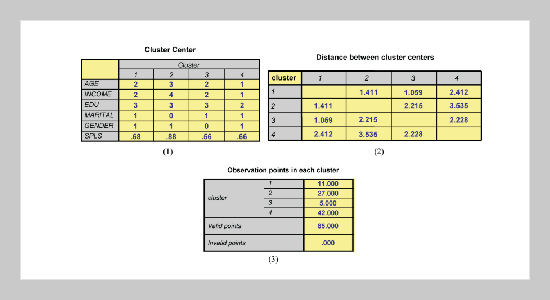Horng-Jinh Chang1 , Lun-Ping Hung2 and Chia-Ling Ho This email address is being protected from spambots. You need JavaScript enabled to view it.3,4 1Department of Business Administration, Asia University, Taichung, Taiwan 413, R.O.C.
2Department of Information Management, National Taipei College of Nursing, Taipei, Taiwan 112, R.O.C.
3Graduate Institute of Management Sciences, Tamkang University, Tamsui, Taiwan 251, R.O.C.
4Department of International Trade, Technology and Science Institute of Northern Taiwan, Taipei, Taiwan 112, R.O.C.
Received:
November 28, 2007
Accepted:
January 3, 2008
Publication Date:
June 1, 2010
Download Citation:
||https://doi.org/10.6180/jase.2010.13.2.09
Comparing with the traditional store, the online store can keep the track of customers’ purchasing records and personal information. By analyzing these customers’ records, online store can have a better understanding of their customers’ profile and purchasing behavior. In this paper, we define a standard product loyalty status, or SPLS, using customers’ purchasing records to evaluate each customer’s loyalty to a certain product. SPLS is incorporated with loyal customers’ personal backgrounds as the input of cluster analysis that divides loyal customers into different groups. Loyal customers in the same groups have similar purchasing behavior and personal backgrounds. Similarity analysis measures the similarity of backgrounds between a non-loyal customer and groups of loyal customers in order to find this customer’s belonged group. Then, an expected SPLS value is assigned to this non-loyal customer to estimate his/her probability of purchasing a certain product. Customers who have expected SPLS value larger than a threshold are regarded as potential customers. Marketing specialists should recommend the product to potential customers. An experimental result shows that there are more than 50 percent of potential customers who actually purchase the product and become a “real” customer. A prototype of our proposed model is used by a fast growing online retailer in Taiwan and is still in the experimental period.ABSTRACT
Keywords:
SPLS (Standard Product Loyalty Status), Loyal Customer, Potential Customer
REFERENCES
















